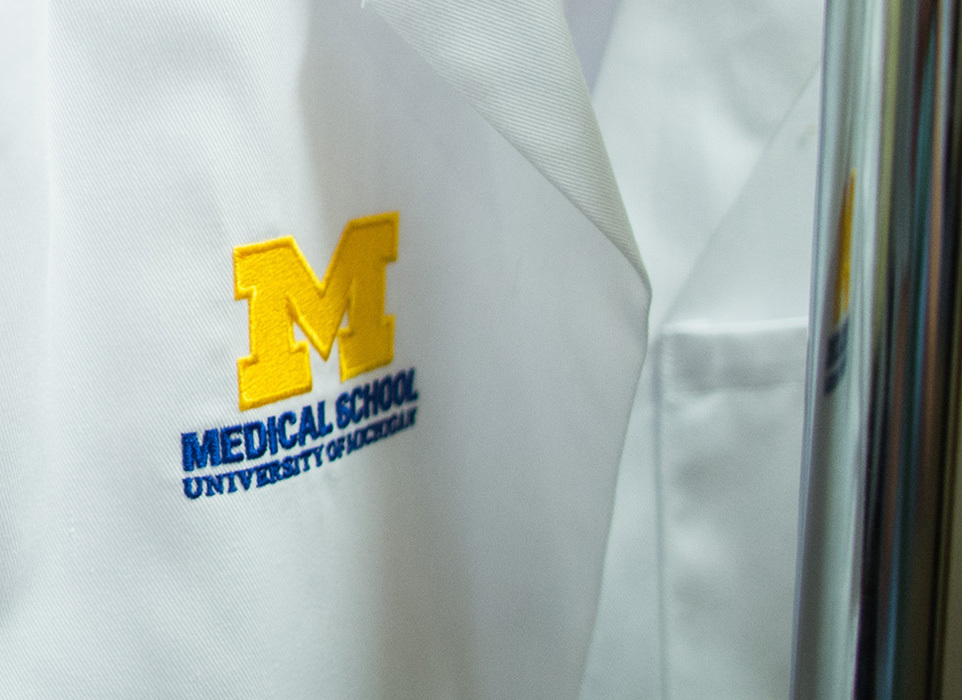
2800 Plymouth Rd.
Ann Arbor, MI 48105
Available to mentor

My primary research interest focuses on biochemical mechanisms of chemokine and growth factor signaling in the breast cancer primary and metastatic tumor environment, and how these regulate breast cancer progression and response to therapy. As a key element of this work, I develop innovative fluorescence and bioluminescence approaches, including integrated systems of luciferase protein fragment complementation and kinase translocation reporters. I am a research specialist in molecular imaging of cell signaling, and I work in a large collaborative network of physicians, biologists, engineers, and computational experts across multiple institutions. We detect and quantify intercellular and intracellular signaling events at the single cell level. From hundreds to millions of single cell observations, we use a variety of approaches to construct multiscale models of intracellular signaling pathways and the tumor environment. Other ongoing projects I am involved in examine cell signaling in myelofibrosis and other cancers, including decoding the functions of GIV in cancer cell states and autocrine/paracrine signaling.
https://luker.lab.medicine.umich.edu/
-
Postdoctoral FellowWashington University in St. Louis, St Louis, 2001
-
Postdoctoral FellowWashington University in St. Louis, Molecular Microbiology, 1996
-
Postdoctoral FellowWashington University in St. Louis, Gastroenterology, 1996
-
PhDDepartments of Molecular Microbiology and Pharmacology, Washington University, St. Louis, 1993
-
BS with HonorsUniversity of Kansas, Lawrence, 1987
-
Center MemberBiointerfaces Institute
Breast cancer tumor microenvironment, chemokine and growth factor signaling in cancer, autocrine/paracrine signaling in cancer, bioluminescence and fluorescence reporters of cell signaling, custom image analysis methods, multiscale computational modeling of cancer cell signaling environments.
-
Kinnunen PC, Humphries BA, Luker GD, Luker KE, Linderman JJ. NPJ Syst Biol Appl, 2024 Apr 18; 10 (1): 42Journal ArticleCharacterizing heterogeneous single-cell dose responses computationally and experimentally using threshold inhibition surfaces and dose-titration assays.
DOI:10.1038/s41540-024-00369-x PMID: 38637530 -
Luker K. 2024 Sep 4;Presentation"Talking Cells: Quantitative analysis of intercellular and intracellular signaling in living integrated cell systems
-
Robison TH, Lee W, Luker KE, Pettit K, Talpaz M, Chenevert TL, Ross BD, Luker GD. Magn Reson Med, 2024 Jun; 91 (6): 2568 - 2578.Journal ArticleQuantitative MRI reveals heterogeneous impacts of treatment on diseased bone marrow in a mouse model of myelofibrosis.
DOI:10.1002/mrm.30016 PMID: 38265182 -
Kinnunen P, Ho KKY, Srivastava S, Huang C, Shen W, Garikipati K, Luker GD, Banovic N, Huan X, Linderman JJ, Luker KE. Frontiers in Systems Biology, 2024 Mar 8; 4:Journal ArticleIntegrating inverse reinforcement learning into data-driven mechanistic computational models: a novel paradigm to decode cancer cell heterogeneity
DOI:10.3389/fsysb.2024.1333760 -
Schleh M, Ryan B, Ahn C, Ludzki A, Van Pelt D, Pitchford L, Chugh O, Luker A, Luker K, Samovski D, Abumrad N, Burant C, Horowitz J. 2024 bioRxiv,PreprintInsulin-mediated suppression of fatty acid release predicts whole-body insulin resistance of glucose uptake and skeletal muscle insulin receptor activation
DOI:10.1101/2024.02.29.582589 -
Sinha S, Farfel A, Luker KE, Parker BA, Yeung KT, Luker GD, Ghosh P. PNAS Nexus, 2024 Feb; 3 (2): pgae014Journal ArticleGrowth signaling autonomy in circulating tumor cells aids metastatic seeding.
DOI:10.1093/pnasnexus/pgae014 PMID: 38312224 -
Sarma P, Carino CMC, Seetharama D, Pandey S, Dwivedi-Agnihotri H, Rui X, Cao Y, Kawakami K, Kumari P, Chen Y-C, Luker KE, Yadav PN, Luker GD, Laporte SA, Chen X, Inoue A, Shukla AK. Nat Commun, 2023 Aug 9; 14 (1): 4808Journal ArticleMolecular insights into intrinsic transducer-coupling bias in the CXCR4-CXCR7 system.
DOI:10.1038/s41467-023-40482-9 PMID: 37558722 -
Schleh MW, Ahn C, Ryan BJ, Chugh OK, Luker AT, Luker KE, Gillen JB, Ludzki AC, Van Pelt DW, Pitchford LM, Zhang T, Rode T, Howton SM, Burant CF, Horowitz JF. Am J Physiol Endocrinol Metab, 2023 Nov 1; 325 (5): E466 - E479.Journal ArticleBoth moderate- and high-intensity exercise training increase intramyocellular lipid droplet abundance and modify myocellular distribution in adults with obesity.
DOI:10.1152/ajpendo.00093.2023 PMID: 37729021